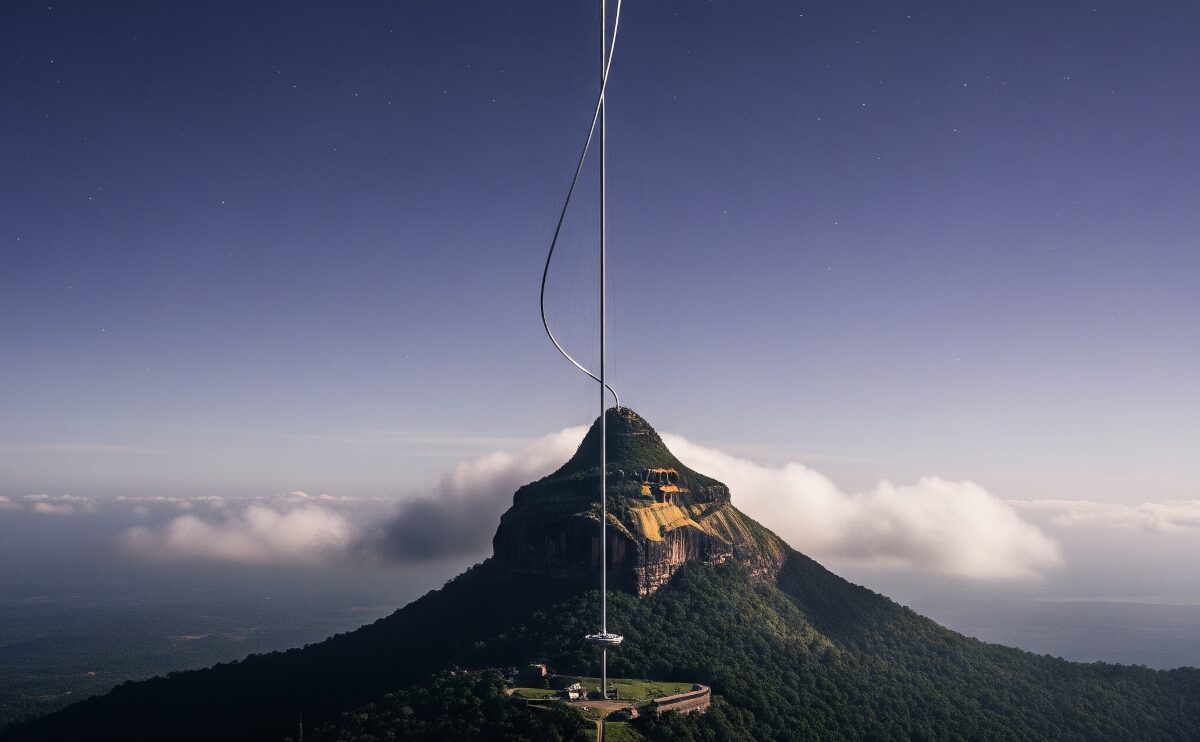Space Elevator
Ascending to the Stars with Clarke’s Grand Vision
A Glimpse into Tomorrow’s Sky
Oh, hello there! Sophia here, tucked away in my little corner of Abiko, Chiba, dreaming of grander things, as museum curators often do. Today, I’d love to whisk you away, not to an ancient ruin, but to a future that, whilst still just beyond our grasp, feels tantalisingly real. We’re talking, of course, about Arthur C. Clarke’s magnificent THE FOUNTAINS OF PARADISE.
Imagine a Space Elevator—an orbital tower so impossibly tall it scrapes the very heavens, connecting our humble Earth to the vast, silent expanse of space. Sounds like something out of a child’s wildest dream, doesn’t it? Yet, in this brilliant 1979 novel, Clarke meticulously lays out the blueprints for just such a marvel, demonstrating visionary engineering at its finest. And if I’m perfectly honest, having lived through my fair share of Tokyo commutes, the idea of a gentle, effortless ride directly into orbit sounds rather divine, wouldn’t you agree? Far less jostling than the Chiyoda Line at rush hour, at any rate!
Building the Space Elevator: A Monumental Endeavour
The Fountains of Paradise isn’t merely a story; it’s a profound thought experiment, a testament to humanity’s unyielding drive to build, to reach, to conquer the impossible. Clarke, with his characteristic precision, delves into the monumental undertaking of constructing an “Orbital Tower” – a colossal structure rising approximately 22,236 miles (35,786 km) from the equator to a geostationary satellite. Think of it as the ultimate escalator to the stars!
The narrative primarily follows Vannevar Morgan, a visionary engineer whose previous feat was bridging the Strait of Gibraltar (a mere stroll compared to this, I imagine!). His new obsession is this Space Elevator, poised to revolutionise space access, making it cheaper and more accessible than ever before. But, as with all truly grand ambitions, it’s not without its hurdles. Morgan finds himself battling not just engineering challenges, but also political wrangling and cultural resistance, particularly from an ancient Buddhist monastery that happens to occupy the only geographically suitable spot on the fictional island of Taprobane (a rather thinly veiled Sri Lanka, where our dear Mr Clarke himself resided for many years). It’s a delightful clash of ancient tradition meeting future ambition, proving that even in the 22nd century, paperwork and divine intervention can still throw a spanner in the works! Clarke, ever the futurist, had actually explored the concept of a Space Elevator in earlier works, as early as 1975 in his non-fiction essay The Space Elevator: ‘Thought Experiment’, or Key to the Universe?, which laid technical groundwork later fictionalised here.
Space Elevator’s Impact: Clarke’s Vision of the Future
The world Clarke paints is one of grand scientific progress. Humanity teeters on the cusp of colonising the Solar System, powered by future technologies once deemed impossible. It’s a place where the air hums with innovation, yet the echoes of history and spiritual contemplation still resonate. The dichotomy between the serene, ancient monastery and the soaring ambition of the Space Elevator provides a fascinating backdrop. If I were to find myself in this future, perhaps curating a museum of futuristic technologies, I’d certainly spend my lunch breaks gazing up at that magnificent tower, contemplating the sheer audacity of human ingenuity. I might even pack a little picnic for the first ascent, though I’d definitely choose a calm day – my constitution isn’t quite suited to zero-g sandwich consumption! And who knows, I might even encounter the enigmatic “Starglider,” an alien probe whose brief appearance challenges humanity’s understanding of its place in the cosmos. Quite the commute, wouldn’t you say?

The Minds Behind the Monument
Clarke’s characters, while perhaps not as emotionally tumultuous as those found in a romantic drama, are nonetheless captivating in their dedication to the “Big Idea.” Vannevar Morgan, our intrepid engineer, embodies the spirit of relentless human endeavour. He’s the kind of person who sees a mountain and thinks, “How can I build through that?” or, in this case, “How can I build above that?” He’s focused, determined, and perhaps a touch single-minded – a necessary trait, one might argue, when one is attempting to literally elevate humanity.
Then there are the monks of the monastery, figures of unwavering faith, standing as a quiet counterpoint to Morgan’s technological zeal. If I were friends with Morgan, I’d probably admire his unwavering vision, though I might gently suggest he consider a nice cup of Earl Grey and a sit-down occasionally. As for the monks, I’d simply be fascinated by their serene resolve in the face of such a monumental change. It’s a delicate balance, this progress and preservation, and Clarke portrays it with a thoughtful hand.
The Legacy of a Visionary Publisher
Arthur C. Clarke’s works, including The Fountains of Paradise, have largely been published by distinguished houses such as Simon & Schuster. These publishers have played a crucial role in preserving and disseminating Clarke’s visionary narratives across generations. While The Fountains of Paradise hasn’t seen the widespread film adaptations of, say, 2001: A Space Odyssey (co-written with the legendary Stanley Kubrick, no less!), it stands as a testament to Clarke’s enduring influence on science fiction and his uncanny ability to predict future technologies. Long before SpaceX or Blue Origin, Clarke imagined a seamless ascent to orbit—not in rockets, but via elegant engineering. Indeed, his ideas have permeated popular culture, inspiring countless other works, from books to films to video games, and continue to fuel real-world research by entities like Japan’s Obayashi Corporation and NASA. It’s rather remarkable how many of his “fanciful” concepts have edged closer and closer to scientific reality. One might even call him a prophet of the Space Elevator! While 2001 explored the metaphysical through monoliths, The Fountains of Paradise remains firmly rooted in engineering realism—a rare feat in a genre often driven by the abstract.
My Final Musings on a Stellar Read
So, there we have it – a little journey into the magnificent world of Arthur C. Clarke’s The Fountains of Paradise. It’s a novel that, for me, perfectly encapsulates the awe and wonder of science fiction. It’s a gentle reminder that human ambition, when tempered with ingenuity and a dash of stubbornness, can indeed reach for the stars.
Please remember, these are, of course, just my humble opinions, offered with a cup of Darjeeling tea in hand from my desk in Abiko. But I do hope I’ve piqued your interest in this truly uplifting (pun absolutely intended!) piece of literature. Why not pick up Clarke’s novel and take your own first steps up the Space Elevator? Who knows what vistas might await above the clouds?
Related Articles
-
The Double Crown: Hugo & Nebula Awards – SF Literature’s Pinnacle & Must-Read Masterpieces

SF Double Crown Awards: Discover the pinnacle of Science Fiction. Explore Hugo & Nebula winning masterpieces, their profound value, and insights for business and the future.




Leave a Reply